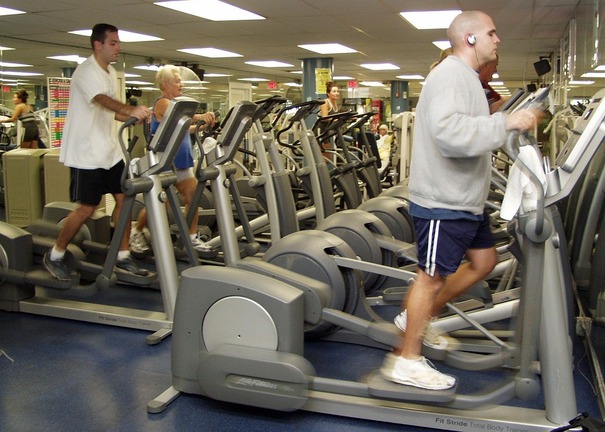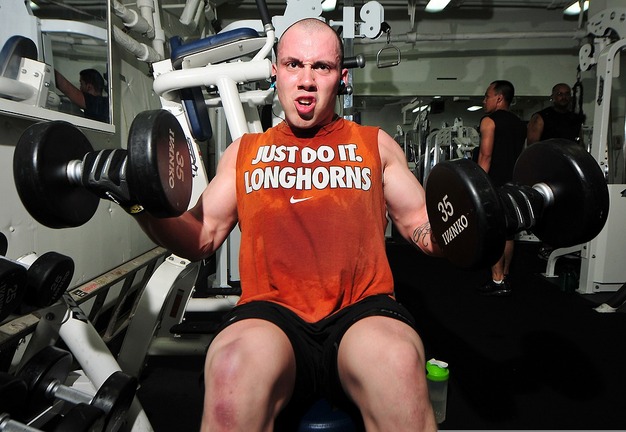When it comes to cardio, you have a lot of choices in fitness equipment. Which piece of equipment—a rowing machine or an elliptical—gives you a better workout depends on how much variety you want to add to your workout.
Here, we’ve pitted the rowing machine and the elliptical against one another. In order for you to make the best decision possible, we’ll go over how each machine functions, its advantages, and how they differ and are similar from one another.
Medical disclaimer: This article is only meant to be used for informational and educational purposes. It does not replace professional medical or health advice. Talk to a qualified healthcare provider if you need advice on your health.
How Do Rowing Machines Operate?
In its most basic sense, rowing is a cardio workout. For a full-body workout, however, use a rowing machine, which effectively combines cardio with light resistance training. You can simulate rowing on the water at home (or in the gym) with the help of rowing machines, which feature a sliding seat, a handle connected to a pull cord, and fixed foot pedals.
To get the most out of your rowing workout, keep these form tips in mind:
- Sit with your back straight, head up, and core tight.
- On the heel cradles, put your feet up.
- Legs are used for propulsion, with heels driven through.
- Back up until your torso and legs are at a 100-degree angle.
- As you come to the end of your lean, pull with your arms.
- Go back to the beginning position.
The Elliptical: How Does It Operate?
An elliptical trainer, like rowing, offers a low-impact cardio workout that is easy on your joints. Ellipticals, a sort of cross between a stair climber and an exercise bike, force you into a gliding motion that resembles running but without the high-impact pounding that comes with running on a treadmill. Most ellipticals also feature movable arms, allowing you to work out your entire body.
To get the most out of your elliptical workout:
- Stand up straight.
- Hold the handlebars firmly but without leaning on them.
- With each pedal stroke, roll through the entire length of your foot, similar to how you would when running (avoid putting too much weight on your toes or footballs).
- Pay attention to the length of your strides: Short strides will make your workout less effective (much like in running workouts). You can adjust your stride on ellipticals with adjustable stride lengths to get the most out of your workouts.
Ellipticals Vs Rowing Machines – Different Benefits
Although the two machines move in very different ways, they also have some things in common. According to Amanda, both types of cardio machines engage the muscles in the upper and lower body while also providing low-impact cardiovascular training.
Key Similarities
Versatility
“The fact that both machines can be used for low-intensity, recovery workouts as well as high-intensity, interval-style training is something I really appreciate. On either machine, it’s really as hard or as easy as you make it,” she says.
Beginner-friendly
They are both very user-friendly for beginners. You can perform efficient workouts without any prior experience once you master the proper technique.

Total-body Workout
One thing is for certain: using either type of equipment will cause your heart rate to increase and work a variety of muscles throughout your body. Both machines offer the same benefits of cardiovascular exercise despite having different movement patterns.
Although rowing machines have more advantages for the musculature, they don’t have the same advantages for your bones and skeletal system. The elliptical machine is a great place to start if you have osteoporosis and need to do some light weight-bearing exercise. Your lower back, hips, and legs may lose minerals at a slower rate as a result of it. The rowing machine can be risky for some older people because it involves more weight. That doesn’t mean to avoid rowing; it just means to consult your doctor before beginning such exercises.
Sadly, the chest and triceps (the backs of the arm) receive no stimulus from the rowing machine because it concentrates so much on the upper back and biceps (the fronts of the arm). The cross trainer does not give these muscles a lot of exercise, but it equally emphasizes all of the muscles used.
And finally, an hour of rowing burns more calories than an hour of running. The rowing machine burns about 800 calories per hour due to the amount of work your glutes, core, back, and arms must do. However, the elliptical machine is only marginally less efficient, burning 700 calories per hour on average. These figures are obviously based on how much effort you put forth, but if you’re trying to lose some weight and can only devote a limited amount of time to one machine, the rowing machine is your best bet.
Key Differences
With either type of cardio equipment, you’ll achieve the same overall goal—better cardiovascular health and increased endurance—but there are some significant distinctions between the two cardio machines.
Muscles Worked
“For one, ellipticals are upright, meaning the exerciser is in a standing position, whereas rowing is a seated exercise,” says The muscles in the upper back, hamstrings, and glutes are primarily worked out by rowing, while the quadriceps, deltoids, and calves are primarily worked out by elliptical exercise, Amanda. Both exercises target major muscle groups.
The range of motion you experience using the two different types of exercise equipment is very different. A rowing machine allows you to move in the sagittal plane bilaterally and horizontally. Consider it like this: Your lower body is performing a movement similar to a squat, while your upper body is performing a movement similar to a barbell row.
However, you’ll be in a more upright position while using an elliptical machine, and you’ll once more be moving in the sagittal plane. Your lower body will move as if you’re walking or jogging in broad strides, while your upper body will move as though you’re punching a bag.
Space Considerations
The size is another distinction. When fully extended, both machines occupy a respectable amount of floor space, but a lot of rowing machines can be folded while most ellipticals cannot. If you’re planning to use an elliptical at home, you’ll need to make sure you have enough overhead clearance because they also take up a lot more vertical space.
Price
A rowing machine and an elliptical are priced differently as well. Entry-level exercise equipment can be purchased for $500 to $800, but if you want a commercial-grade machine, you should be prepared to spend between $1,000 and $3,000 (for an elliptical).
As a point of comparison, the Concept2 Model D Rower, our top pick for the best rowing machine, is available on Amazon for $1,100. The NordicTrack Commercial 14.9, our top pick for an elliptical machine, costs about $3,000 at retail.
Rowing Machine Motion
However, the bar you pull on a rowing machine is not fixed in place. You must use proper technique to prevent injury and reap the greatest benefits because it can move up, down, and side to side. Correct rowing technique involves a four strep process while maintaining a rigid and straightened back:
- Pushing with your legs
- Pulling with your arms and back
- Relaxing the arms and back to bring the bar back to the starting position
- Relaxing the legs to bring your body back to the starting position
Many of the people using the rowing machine in the gym are using it incorrectly, as can be seen by observing them in action. They’ll pull with their backs vehemently, not pull enough, or carry out the steps in the wrong sequence. You encounter a barrier when learning how to use the rowing machine correctly because it takes one or two lessons from a qualified trainer to show you how to carry out the exercise properly. The rowing machine can be a significant barrier if you are timid or just want to jump in right away.
Despite this, you shouldn’t let it deter you from using a rowing machine because, with the right technique, it offers a number of benefits that elliptical machine exercise does not.
For instance, the rowing machine puts a lot of emphasis on the back and arms, which are frequently weak points for people. As a result of spending the majority of our waking hours hunched over a desk, our chests tighten, our lower backs weaken, and our posture becomes extremely curved. The rowing machine works out all the muscles that aid in resolving these problems. The movements you make on the rowing machine are remarkably similar to those of a dead lift (picking up a heavy object from the floor), but it trains the upper back muscles—the traps, rhomboid, and posterior deltoids—much more. If carried out properly, this will help to prevent injuries that are common as we age and strengthen the areas around your spine that are most vulnerable to them. It will also help you move more freely in daily life. Rowing has many more benefits for the core than using an elliptical machine. Many times we perform a motion akin to the movements required for rowing, but rarely do we move akin to that on the cross trainer/elliptical machine.
In Conclusion
the best machine will depend on you as an individual. The rowing machine will be your best bet if you have tight chest and weak back muscles. However, if you’re looking for a more gentle workout for your entire body, an elliptical machine or cross-trainer might be more appropriate for you. The rewards you receive from either machine ultimately depend on how much effort you put forth. The machine you select won’t significantly affect your results as long as you’re giving it your all and pushing yourself just a little.
